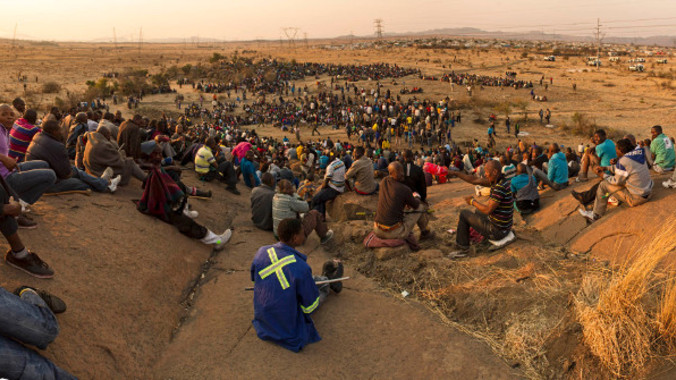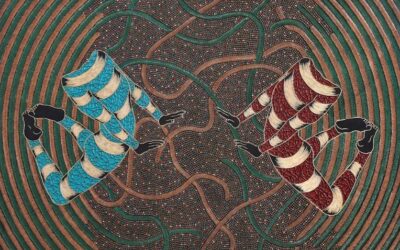Rehad Desai’s documentary Miners Shot Down is compelling viewing even if there are moments at which one wants to turn away, writes Shaun de Waal.
Rehad Desai’s documentary Miners Shot Down is the most comprehensive and readily digestible account of what happened at Marikana in August 2012, when 44 people died in events related to an unprotected strike. Ten died in the days leading up to what became the Marikana massacre, when police killed 34.
It’s disturbing, though, to hear in the documentary (narrated by Desai himself), the references that locate footage in time, as in “three days before the massacre …”, making it sound as though the massacre had weirdly already happened, or was in some way predestined.
Of course, this is a matter of the way the documentary’s narrative is put together, moving, as it must, forward, then back, then forward again, as it tries to find the key moments at which events were pushed one way or another.
The 34 deaths were predestined, in a way, if Desai’s analysis is correct: it had been decided between the mine management and the police that this stand-off had to end, and the police insisted on disarming the strikers before anything else could happen – a condition that, more than any other, led to the miners being attacked as they were finally leaving the koppie on which they had gathered.
From the footage here, it seems that the slide from agreement to ambush took place as the miners left the hill, but with their weapons in hand.
Yet the police reaction was kragdadigheid – a show of force – from the start, as Desai very ably shows. This was encouraged by Cyril Ramaphosa, then on the board of the responsible mine company, Lonmin, who took it to the highest level – the ministers of police and mineral resources.
Ramaphosa called for stern action against this “criminal” strike, and the police responded with alacrity. It’s scary just to see, in Miners Shot Down, more and more armoured police vehicles arrive at the scene, then the barbed wire (which would trap the miners when they began to leave), the guns and the live ammunition. A sense of the inevitability of bloodshed begins to grow.
It’s a remarkable achievement that Desai and his collaborators got all this together, and relatively soon after the event. (His involvement in a support campaign for the strikers probably helped.)
Not only did Desai et al assemble the financing for it (a patchwork of funders), they also laid hands on all this important footage: from the police, as well as other sources, presumably including some people’s cellphone footage.
There are even shots of National Union of Mineworkers (NUM) officials making a display of armed strength, in opposition to complaining miners, who marched on their offices days before the massacre.
There is security-camera footage that sheds a little light on another confrontation (one in which two Lonmin security guards died), also just ahead of the massacre.
This narrative is put together from these pieces, this jigsaw puzzle that as yet does not quite fit into one picture. It makes compelling viewing, even if there are moments at which one wants to turn away.
There is, to my taste, too much music (the soaringly sad singing is lovely, but feels like emotional manipulation), and I’m no fan of the personalised voiceover. Does it really add much for Desai to tell us how he used to march for the NUM and behind Ramaphosa, in whom he is now “disappointed”?
Maybe I just prefer a more austere style – these are small things. There’s no gainsaying the power of Miners Shot Down and the challenge it poses to observers, judges and the relevant authorities to work out why and how this tragic bloodletting happened 20 years into South Africa’s democracy.
Miners Shot Down is now showing at Cinema Nouveau outlets in Jo’burg, Durban and Cape Town.
It is also featured in the Encounters Film Festival in Cape Town and Johannesburg.
via Mail & Guardian






